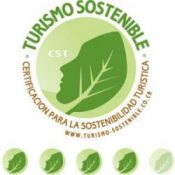 Costa Rica is a small country that represents only .03% of total world land mass yet contains 5% of the worlds biodiversity. It is a country that has more than 25% of it’s national territory under some form of protection yet the waters that border the country have been largely neglected with less than one percent being regulated under some form of protective category.
Costa Rica is a small country that represents only .03% of total world land mass yet contains 5% of the worlds biodiversity. It is a country that has more than 25% of it’s national territory under some form of protection yet the waters that border the country have been largely neglected with less than one percent being regulated under some form of protective category.Costa Rica’s Oceans
 Costa Rica is a small country that represents only .03% of total world land mass yet contains 5% of the worlds biodiversity. It is a country that has more than 25% of it’s national territory under some form of protection yet the waters that border the country have been largely neglected with less than one percent being regulated under some form of protective category.
Costa Rica is a small country that represents only .03% of total world land mass yet contains 5% of the worlds biodiversity. It is a country that has more than 25% of it’s national territory under some form of protection yet the waters that border the country have been largely neglected with less than one percent being regulated under some form of protective category.



